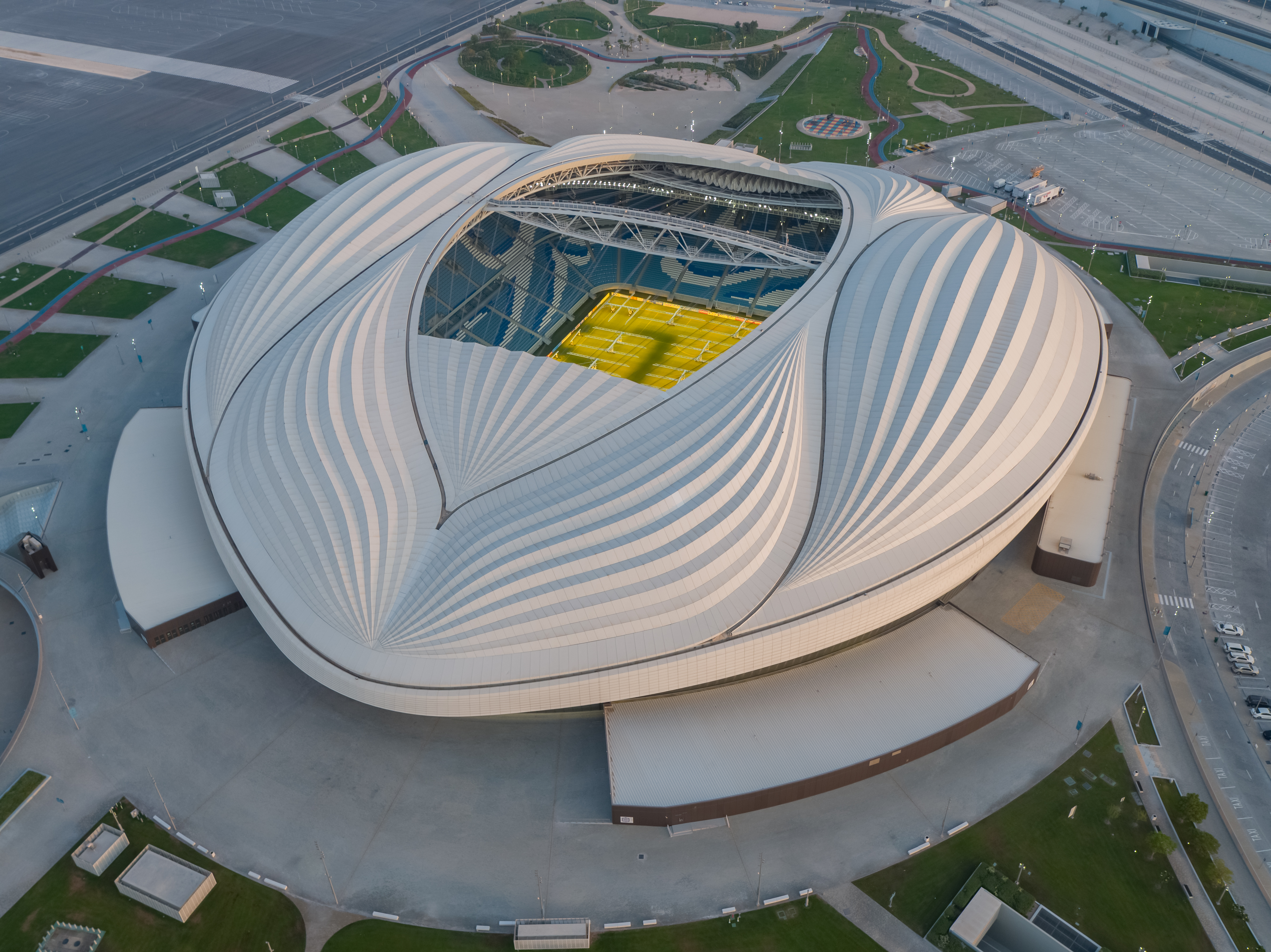
Qatar is hosting the AFC Asian Cup 2023 for the third time, and the continental tournament will be spread across nine stadiums in the FIFA World Cup 2022 host nation.
Football fans will watch 24 teams compete for the trophy with the first match taking place on January 12 at Lusail Stadium. Seven World Cup stadiums and two other football stadiums are being used for the event.
Here is a look at the venues:
1. Lusail Stadium
Capacity: 88,000
Inauguration: September 2022
Location: Lusail City
Lusail Stadium is the biggest tournament venue for the Asian Cup and will host the opening ceremony, the first match – being played between Lebanon and Qatar – and the final of the tournament on February 10.
Built in Lusail, a planned city for 200,000 people 15km (9 miles) north of central Doha, the stadium saw Lionel Messi lift Argentina’s third World Cup trophy a little over a year ago.

2. Ahmad bin Ali Stadium
Capacity: 45,032
Inauguration: December 2020
Location: Al Rayyan
Ahmad bin Ali Stadium is named after a former emir of Qatar and will host seven matches of the tournament, including a quarterfinal and a semifinal.
The stadium’s design is meant to reflect a tent in the desert. It was built on the site of an old stadium, more than 90 percent of which was reused or recycled. The venue was inaugurated on December 18, 2020, for the final of the Amir Cup, a Qatari men’s football tournament.

3. Abdullah bin Khalifa Stadium
Capacity: 10,000
Inauguration: February 2013
Location: Doha
Abdullah bin Khalifa Stadium is located in Duhail, a district of Doha. It will host six group stage matches and one round of 16 knockout game.
Unlike most of the other venues, it did not host any World Cup matches, but it has witnessed several domestic cup finals as well as the final for the AFC under-23 tournament in 2016. It is also considered home to the Qatar Stars League’s Al-Duhail team.
4. Jassim bin Hamad Stadium
Capacity: 13,030
Inauguration: 2010 (renovated)
Location: Al Rayyan
Jassim bin Hamad Stadium was first inaugurated in 1975 and went through renovations in 2004 and 2010. In the 2014-2015 football season, the venue witnessed the Italian Supercoppa between Napoli and Juventus.
At the Asian Cup, the venue will host six group stage matches and one round of 16 knockout game. In 2011, it also hosted matches for the AFC Asian Cup, including a quarterfinal.

5. Khalifa International Stadium
Capacity: 45,857
Inauguration: May 2017
Location: Doha
Khalifa International Stadium was the first tournament-ready venue for Qatar 2022. For the Asian Cup, it will host six matches, including a round of 16 clash.
Built in 1976, it is one of Qatar’s oldest stadiums and went through upgrades after Qatar won the World Cup bid. Its seating capacity was increased from 20,000 to more than 45,000.

6. Education City Stadium
Capacity: 44,667
Inauguration: June 2020
Location: Education City
Education City Stadium was inaugurated in June 2020 during a virtual event that paid tribute to front-line healthcare workers during the COVID-19 pandemic. It will host matches up to and including the quarterfinals.
The venue is situated among university campuses just to the west of Doha and is reachable by metro.

7. Al Janoub Stadium
Capacity: 44,325
Inauguration: May 2019
Location: Al Wakrah
Al Janoub Stadium will host matches up to and including a quarterfinal during the Asian Cup. It was the first Qatar 2022 tournament venue to be built from scratch and has played host to important matches such as the 2020 AFC Champions League final and six matches of the FIFA Arab Cup 2021.
Located south of Doha in the city of Al Wakrah, the stadium’s design was inspired by traditional boats used for pearl diving and fishing. It was designed by the late, renowned architect Zaha Hadid.

8. Al Bayt Stadium
Capacity: 68,895
Inauguration: November 2021
Location: Al Khor
Al Bayt Stadium is set to host four matches during the Asian Cup – two group stages, one round of 16 and a quarterfinal. At the World Cup, the stadium witnessed the semifinal between France and Morocco and the opening game between Qatar and Ecuador.
It is constructed in the form of a Bedouin tent and situated on Qatar’s northeastern coast about 35km (22 miles) from Doha.

9. Al Thumama Stadium
Capacity: 44,400
Inauguration: October 2021
Location: Doha
Al Thumama Stadium is set to host matches up to and including the semifinals. In 2022, it hosted eight World Cup matches, including the quarterfinal in which Morocco defeated Portugal.
Situated south of central Doha close to Hamad International Airport, the stadium is built in the form of a gahfiya, the traditional cap worn by men across the Middle East.








